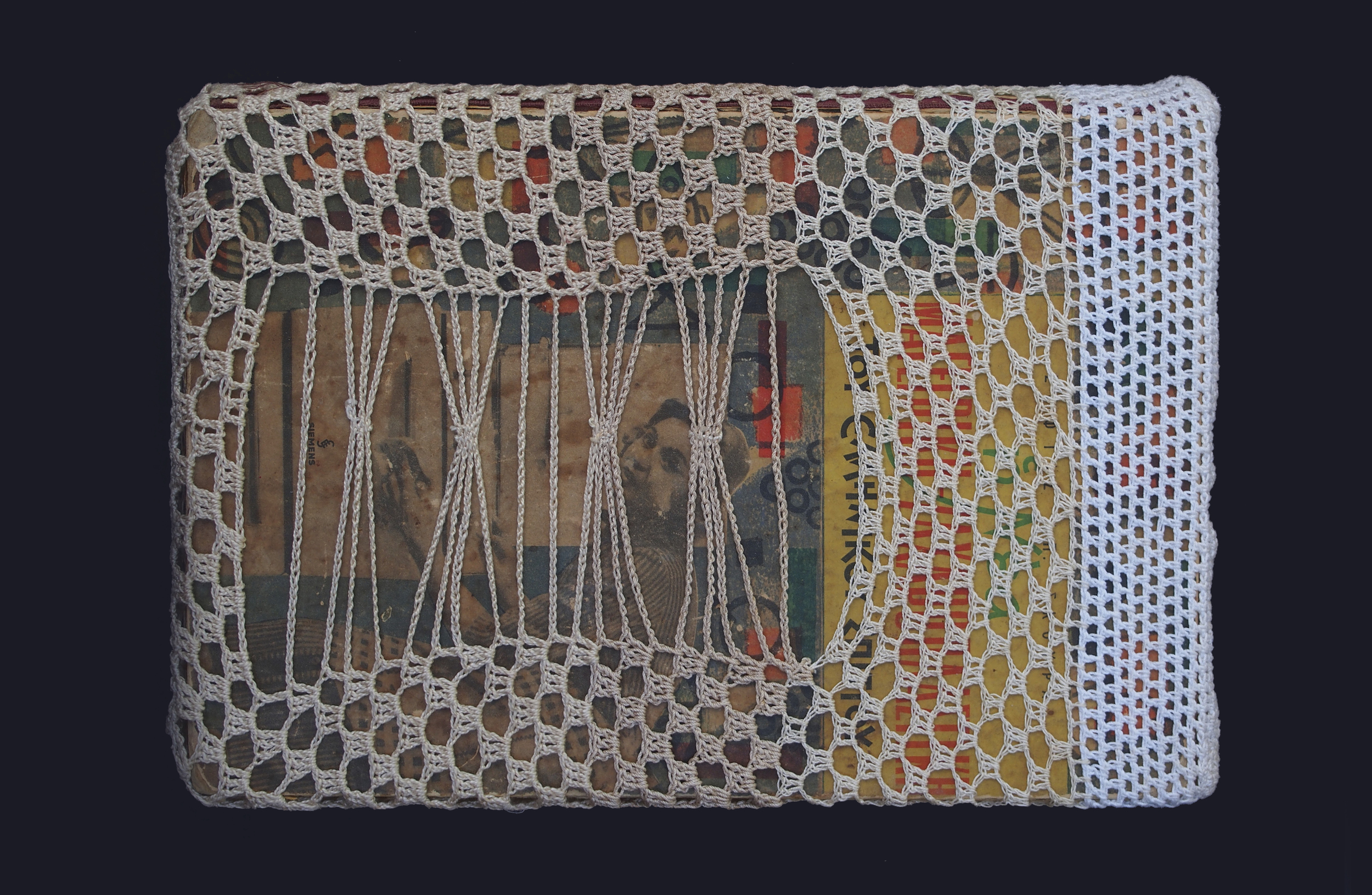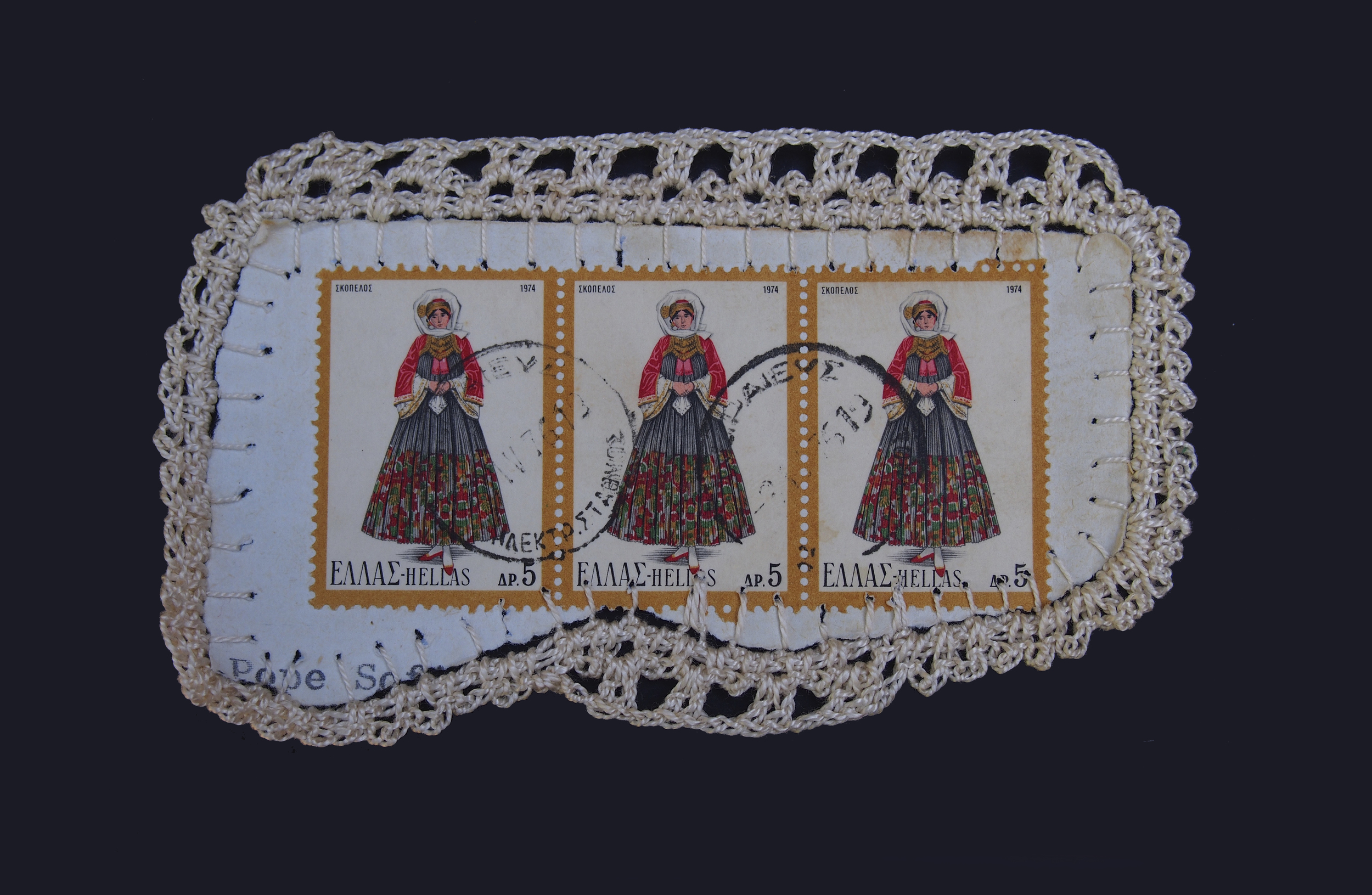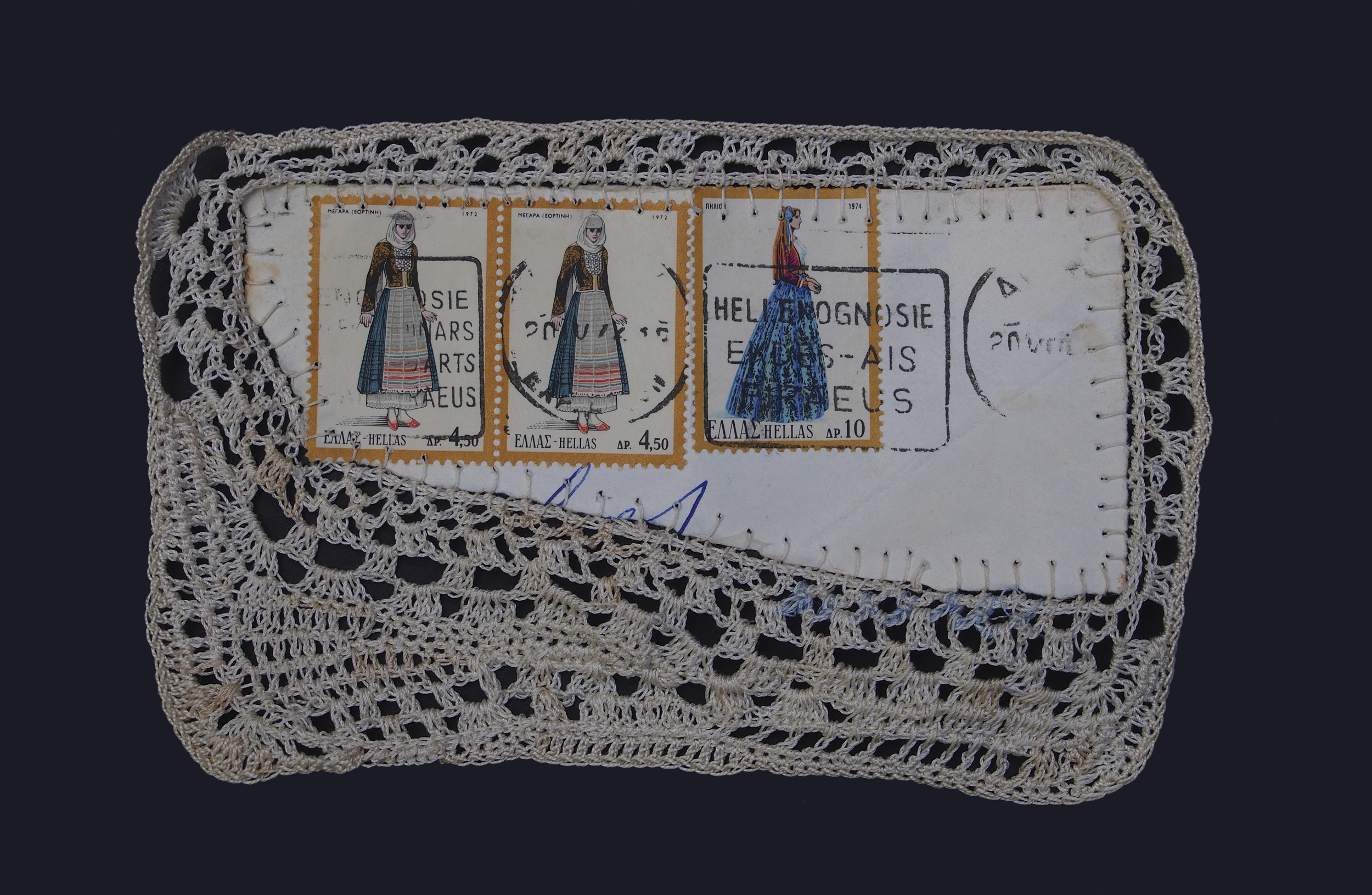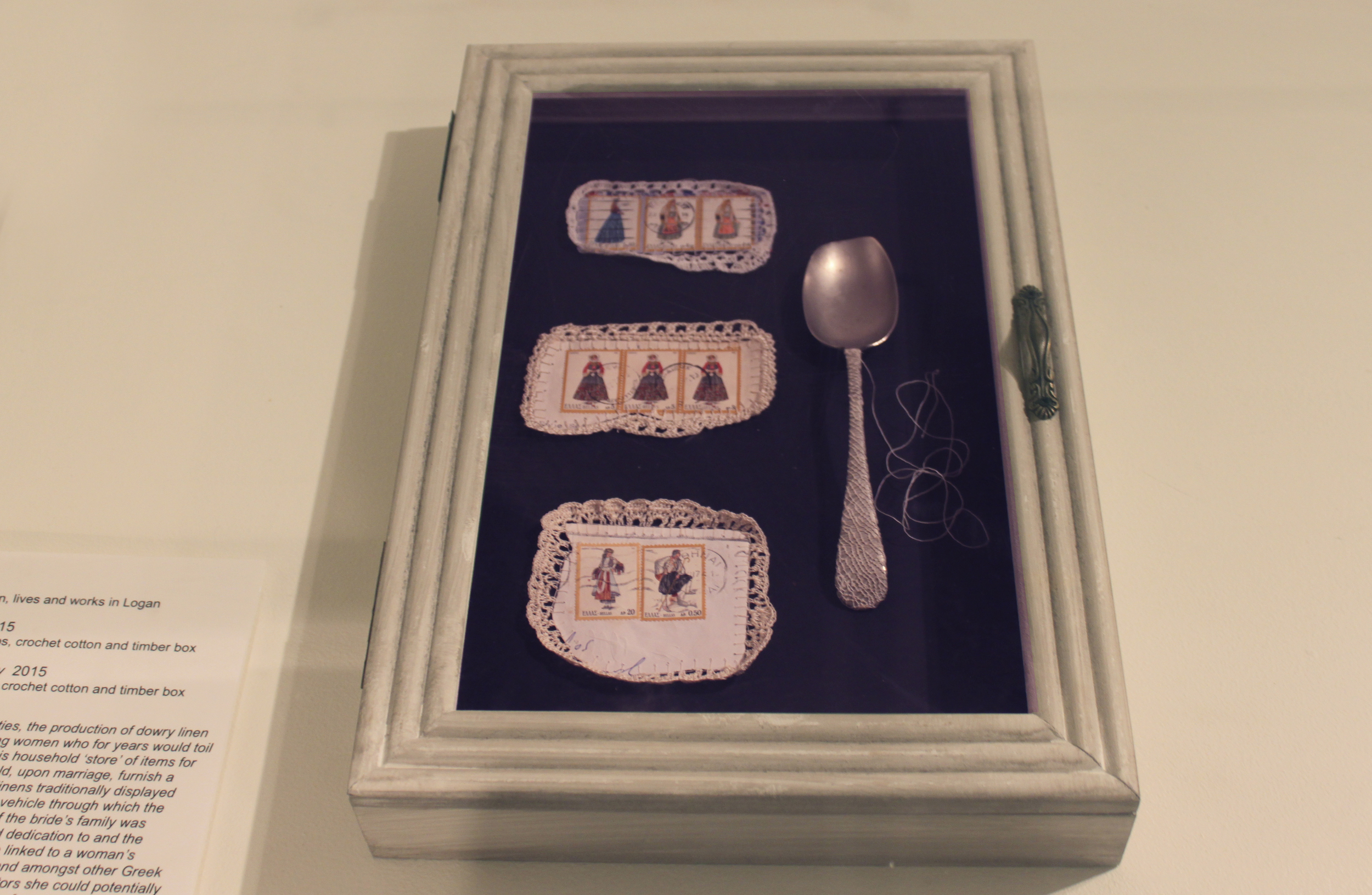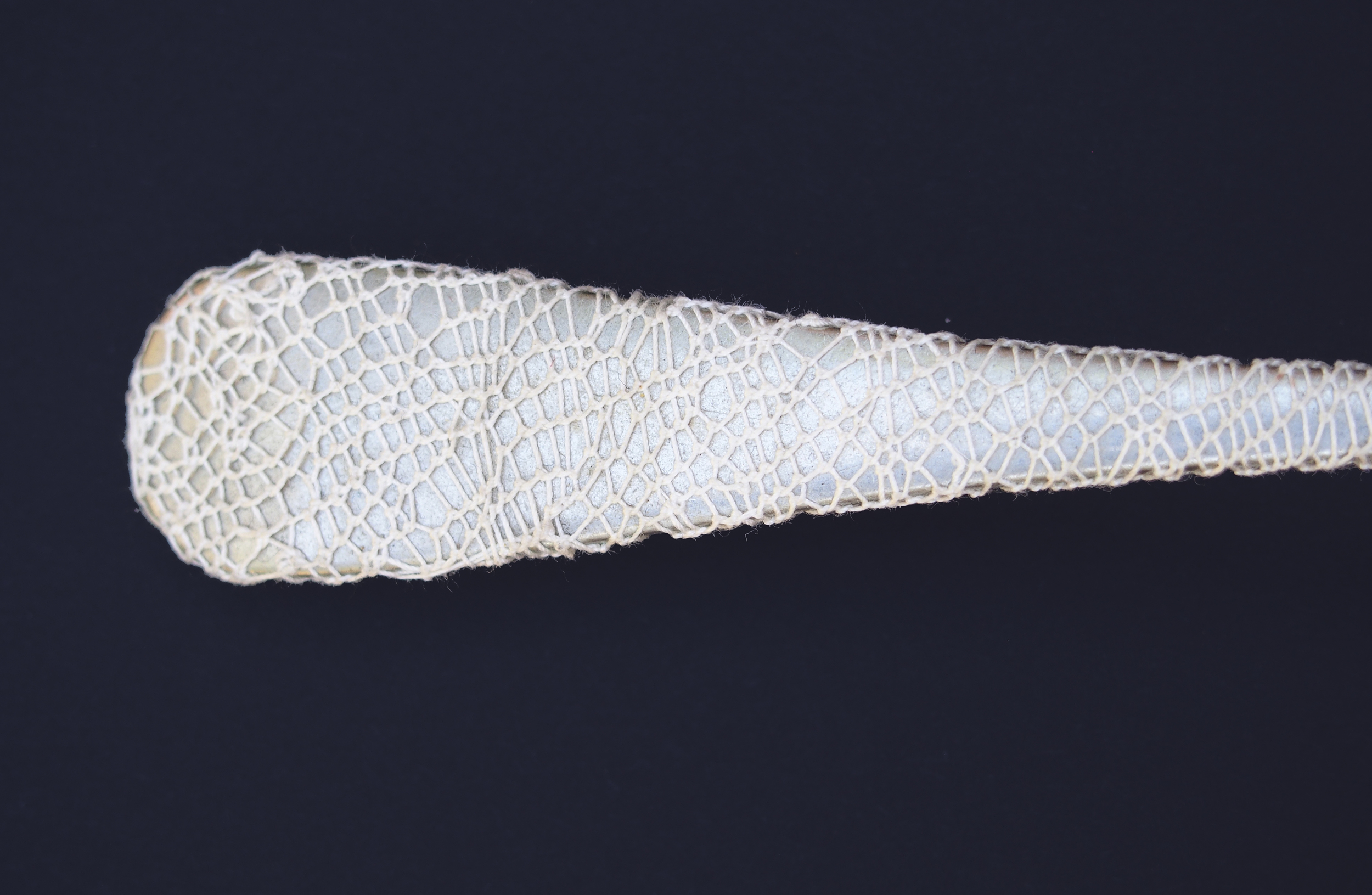Glory Box Hope Chest Bottom Draw
Exhibition, Logan Art Gallery, 2015
Vintage cook book, stamps, crochet hook and stirring spoon (2m x 1m)
Material objects with close connections to the past or to former homes possess potential to be emotional triggers. Marianne Hirsh refers to objects as triggers and our tendency to endow them with our own projections. The object may “release latent, repressed, or dissociated memories - memories that, metaphorically speaking, remain behind, concealed within the object. Objects and places, therefore, Aleida Assmann argues, can function as triggers of remembrance that connects us, bodily and thus also emotionally, with the object world we inhabit.” Hirsch, The Generation of Post memory: Writing and Visual Culture after the Holocaust. 211-212.
In many European societies, the production of dowry linen often fell to girls and young women who for years would toil diligently to accumulate this household ‘store’ of items for their trousseau, which would, upon marriage, furnish a future home. These dowry linens traditionally displayed “the brides worth and was a vehicle through which the reputation and the prestige of the brides family was displayed”. The quality of, and dedication to and the production of dowry linen were linked to a woman’s standing amid her community and amongst other Greek women and to the caliber of suitors she could potentially attract.
Zantis has used these dowry crafts to encase the memories already embedded in the objects with new meaning. In the case of the worn spoon she reveres the repetitive meditative probably arduous action of stirring by embellishing it with fine needlework. By crocheting around the stamps Zantis captures the action of how her mother ripped them from their envelope and protected their memory and importance to someone so far from family and homeland especially when her father forbade her to contact her family. Her grandfather gave a cookbook to her mother upon leaving Greece for Australia. It held promise in the anticipation of recreating delicious meals from home like her mothers but it also witnessed how those dreams become mediocre and repetitive. Finally the repaired hook speaks of a time where a poor young woman made dowry items for the wealthy and had none of her own. When her crochet hook broke she repair it because she could not afford a new one.
